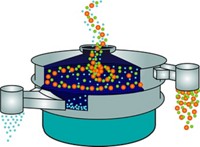Advertisement
Grab your lab coat. Let's get started
Welcome!
Welcome!
Create an account below to get 6 C&EN articles per month, receive newsletters and more - all free.
It seems this is your first time logging in online. Please enter the following information to continue.
As an ACS member you automatically get access to this site. All we need is few more details to create your reading experience.
Not you? Sign in with a different account.
Not you? Sign in with a different account.
ERROR 1
ERROR 1
ERROR 2
ERROR 2
ERROR 2
ERROR 2
ERROR 2
Password and Confirm password must match.
If you have an ACS member number, please enter it here so we can link this account to your membership. (optional)
ERROR 2
ACS values your privacy. By submitting your information, you are gaining access to C&EN and subscribing to our weekly newsletter. We use the information you provide to make your reading experience better, and we will never sell your data to third party members.
Environment
Toxicity Comparisons
EPA adopts new numbers to estimate risks from Dioxins, Furans, and PCBs
by Cheryl Hogue
January 31, 2011
| A version of this story appeared in
Volume 89, Issue 5
The Environmental Protection Agency has just released a document that will, in part, affect the extent and expense of cleaning up dioxins, furans, and certain polychlorinated biphenyls (PCBs). The document, made public on Jan. 6, recommends changes to the process used in evaluating human health risks from these compounds, which can cause cancer and other serious health effects through the same biochemical pathway.
Although stakeholders broadly agree that EPA needed to make changes to this process, reaction to the guidance document is mixed. An environmental group calls EPA’s move “a very important step toward protecting public health.” But the American Chemistry Council (ACC), an organization of chemical manufacturers that includes some companies that face liability for pollution cleanup, says the guidance will continue to lead to inaccurate risk estimates for contaminated areas.
The process EPA uses to determine the toxicity of this family of compounds involves conversion factors that compare the toxicity of 28 polychlorinated substances with that of the most toxic and most studied member of this chemical family, 2,3,7,8-tetrachlorodibenzo-p-dioxin (TCDD). Mixtures of other dioxins, furans, and PCBs are more common pollutants than TCDD is. So regulators use conversion factors to estimate the toxicity of the mixtures relative to TCDD’s.
These toxicity equivalency factors give TCDD a value of one. The related compounds are each assigned a fraction of this, based on their individual toxicity. For instance, the toxicity of 2,3,4,7,8-pentachlorodibenzofuran—one of the pollutants that Dow Chemical is responsible for releasing into a Michigan river system—is equivalent to 0.3 of TCDD’s toxicity.
To apply the factors, regulators first determine which polychlorinated compounds are present at a contaminated site along with the relative amount of each. They then multiply the quantity of each substance by the chemical’s toxicity equivalency factor. Next, they add the products for all the pollutants together to determine how much TCDD would pose the same hazard as the congeners found at the site, even if TCDD isn’t present.
With the resulting numbers, regulators estimate human health and environmental risks from dioxins and related pollutants at the site. This, in turn, guides them in determining the extent of cleanup needed.
The EPA document focuses on these conversion factors and recommends a shift to the factors adopted by the World Health Organization in 2005. WHO published these numbers in 2006 in Toxicological Sciences (DOI: 10.1093/toxsci/kfl055).
EPA’s newest move means the agency will use the international factors in human health risk assessments and is abandoning the conversion numbers it has employed for the past two decades. For a number of the polychlorinated compounds, WHO’s 2005 factors are an order of magnitude higher than the numbers EPA has been using.
Olga Naidenko, senior scientist for the activist organization Environmental Working Group, says adoption of the WHO toxicity factors “will greatly help EPA scientists to assess health risks from dioxins and dioxin-like compounds and, in the future, provide the necessary guidance for cleanup efforts at contaminated sites around the country.”
Meanwhile, ACC has criticized EPA for updating its toxicity equivalency factors separately from the agency’s ongoing risk reassessment of TCDD. Agency Administrator Lisa P. Jackson called for completion of the two-decade effort to revise its 1984 risk assessment of TCDD by the end of 2010. But EPA scientists missed that deadline. This is in large part because of ongoing review by the agency’s Science Advisory Board, which is expected to finish its work early this year (C&EN, Nov. 15, 2010, page 30).
ACC also faults EPA for not following the advice of a 2006 National Academy of Sciences report to create an expert panel to develop new methodology for applying conversion factors. This, ACC says, “would help in conducting more accurate risk assessments.”
William H. Farland, vice president for research at Colorado State University, notes that scientists are working to determine uncertainty surrounding the WHO factors. This uncertainty includes the differences between toxicity observed in laboratory animals and that predicted for humans, says Farland, a former top scientist at EPA and one of the authors of the 2006 paper. In addition, he says, it includes variation in health effects among exposed people.
In the toxicity factors document, EPA says it will evaluate new toxicity information for dioxin-like compounds such as some PCBs and update the numbers in light of it.




Join the conversation
Contact the reporter
Submit a Letter to the Editor for publication
Engage with us on Twitter